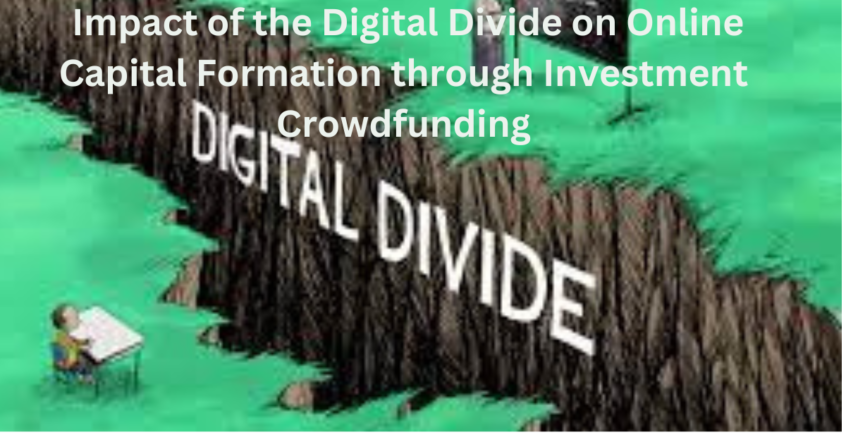Introduction
The rapid digitalization of financial services has significantly transformed capital formation strategies, with investment crowdfunding becoming an increasingly popular avenue for raising capital. However, the digital divide – characterized by disparities in digital literacy and access – threatens to undermine this potential. This report will discuss how the digital divide affects online capital formation through investment crowdfunding and suggest strategies to mitigate these challenges.
Digital Divide and Crowdfunding
Investment crowdfunding relies heavily on the accessibility and usability of digital technologies. These platforms offer an online space where entrepreneurs can present their business ideas to potential investors who, in turn, can provide capital in exchange for equity or debt. However, the digital divide presents barriers to the full realization of crowdfunding’s potential in two main ways:
- Entrepreneur Access: Entrepreneurs from underrepresented groups and underserved areas often lack the digital literacy or high-speed internet access needed to effectively use crowdfunding platforms. As a result, these entrepreneurs may be unable to present their business proposals to potential investors, reducing their opportunities for capital formation.
- Investor Participation: The digital divide also impacts investor participation. Potential investors from disadvantaged backgrounds may lack the digital literacy necessary to navigate crowdfunding platforms. In addition, the lack of reliable internet access may exclude potential investors from participating in crowdfunding campaigns altogether.
Impact on Online Capital Formation
The digital divide essentially limits the pool of potential entrepreneurs and investors involved in crowdfunding. By denying access to these platforms for some, the divide constrains the potential for online capital formation and hampers the growth of crowdfunding as a democratic financial tool.
Recommendations
To bridge the digital divide and maximize the potential of crowdfunding for capital formation, several strategies could be employed:
- Digital Literacy Programs: Implement programs designed to improve digital literacy among both potential entrepreneurs and investors. These programs should specifically target those populations most affected by the digital divide.
- Improve Internet Accessibility: In line with the U.S. Department of Commerce’s National Telecommunications and Information Administration (NTIA)’s plans, work towards ensuring high-speed internet access across all geographic areas and socioeconomic groups.
- User-Friendly Platforms: Develop and promote user-friendly crowdfunding platforms that cater to individuals with various levels of digital proficiency.
- Regulatory Incentives: Advocate for policy changes and regulatory incentives that encourage investment in digital infrastructure and digital literacy programs.
Conclusion
In its current form, the digital divide presents a significant barrier to online capital formation through investment crowdfunding. However, with targeted strategies such as improving digital literacy, enhancing internet accessibility, promoting user-friendly platforms, and advocating for supportive regulations, we can democratize access to crowdfunding platforms. By doing so, we will not only bridge the digital divide but also unlock the full potential of crowdfunding as an equitable tool for capital formation.

